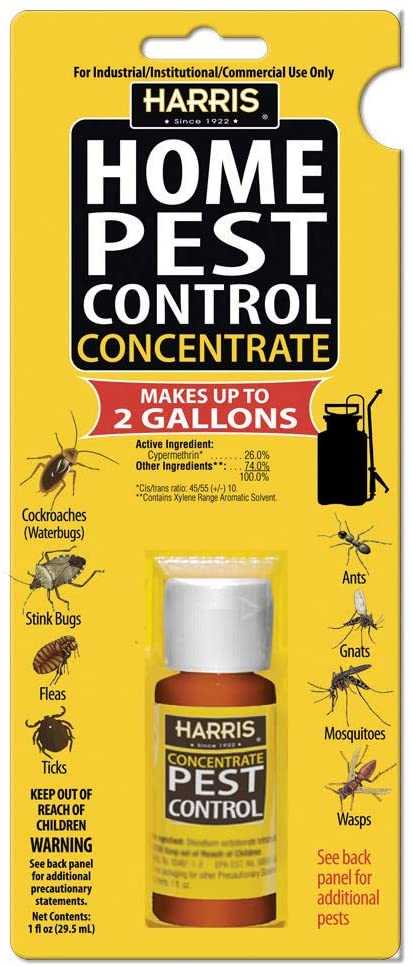Quality A1 Pest Control Services Charlotte - Safeguard Your Home
Bed Pest Treatment Failure: Contrasting Chemical Vs. Non-Chemical Solutions
In the realm of parasite control, particularly when managing the persistent concern of bed insects, the selection in between chemical and non-chemical treatment solutions can be a crucial one. Both techniques supply unique benefits and downsides, influencing elements such as performance, safety and security factors to consider, and general expense. By checking out the nuanced details of each technique, a clearer understanding of which path to go after in attending to a bed insect infestation can be achieved.
Performance of Chemical Therapies
Chemical therapies for bed pest problems have been extensively recognized for their quick and potent efficacy in getting rid of these pests. When thinking about the performance of chemical therapies, it is essential to understand that they can give a quick and comprehensive remedy to a bed bug problem. Specialist pest control specialists commonly count on pesticides to target bed bugs at various phases of their life process, including eggs, nymphs, and adults. These chemicals generally work by disrupting the bed insects' nerve system, bring about paralysis and eventual death.
Moreover, chemical therapies have the advantage of supplying recurring effects, meaning that they can remain to remove bed insects even after the preliminary application. This residual activity is especially advantageous in combating any type of potential re-infestations. Furthermore, the rapid action of chemical treatments can bring alleviation to individuals encountering serious bed pest problems, enabling them to restore control of their home promptly.
Safety Worry About Chemical Solutions
One essential element that requires mindful factor to consider when utilizing chemical services for bed bug treatment is making sure the safety and security of residents and the environment. While chemical treatments can be effective in eradicating bed insects, they might posture threats if not handled properly. Among the primary security worries with chemical solutions is the potential damage they can create to human health and wellness. Direct exposure to certain chemicals used in bed insect treatments can bring about respiratory system issues, skin inflammation, or various other unfavorable responses, specifically in people with pre-existing problems or sensitivities. In addition, improper application or dose of chemical pesticides can lead to hazardous residues lingering in the cured location, posing long-term health dangers to passengers.
In addition, the ecological influence of chemical solutions is one more substantial factor to consider. Some pesticides made use of in bed bug treatments may be dangerous to useful insects, wildlife, and environments if they seep right into the dirt or water supply. It is crucial to utilize chemical therapies deliberately, adhering to safety and security guidelines, and thinking about much less toxic choices to alleviate these risks and make sure the effective and risk-free monitoring of bed pest invasions.
Advantages of Non-Chemical Strategies
Thinking about the prospective security issues and environmental effect connected with chemical remedies for bed pest therapy, discovering non-chemical methods presents an encouraging choice with numerous distinct benefits. Non-chemical approaches offer a safer alternative for houses, specifically those with people, youngsters, or family pets conscious rough chemicals. These approaches eliminate the dangers of exposure to toxic materials, lowering the capacity for damaging wellness results. In addition, non-chemical treatments are eco-friendly, as they do not add to air or water air pollution, making them a lasting option for pest control.
In addition, non-chemical options can be effective in targeting bed pests, consisting of hard-to-reach locations where chemical therapies may not pass through. Methods such as heat treatment, vacuuming, heavy steam cleaning, and cushion coverings give comprehensive elimination without the use of dangerous chemicals. Additionally, non-chemical methods can be less turbulent, requiring minimal prep work and permitting for quicker reentry right into treated locations. Overall, choosing for non-chemical bed bug therapy techniques not only prioritizes safety and security and environmental defense but likewise guarantees reliable and extensive parasite control.
Limitations of Non-Chemical Treatments

In addition, non-chemical therapies usually require multiple applications to achieve successful elimination. This can be taxing and may not always assure total elimination of all bed bugs and their eggs, particularly in hard-to-reach or covert places.
Furthermore, the success of non-chemical therapies greatly relies upon appropriate implementation and thoroughness, which can be testing for people without specialist know-how. Inadequate application of non-chemical methods may lead to incomplete obliteration, causing consistent invasions and the demand for added treatments.
Therefore, while non-chemical treatments have their benefits, it is vital to acknowledge these restrictions and consider them when figuring out one of the most reliable approach for taking care of bed bug problems.
Cost Contrast: Chemical Vs. Non-Chemical Options
Provided the constraints associated with non-chemical therapies, a necessary facet to review in the context of bed pest administration is the cost contrast between chemical and non-chemical options. In comparison, non-chemical therapies like heat therapy or vapor can be a lot more expensive, with prices ranging from $1,000 to $6,000 for an entire home. While the first expense of A1 pest control services charlotte chemical treatments might appear lower, numerous therapies may be required to fully eradicate the problem, potentially raising the total expense.
Final Thought

Considering the prospective security worries and environmental impact linked with chemical options for bed pest treatment, discovering non-chemical strategies provides an appealing choice with numerous distinctive advantages.Offered the constraints associated with non-chemical treatments, an essential aspect to assess in the context of bed bug management is the price comparison in between chemical and non-chemical options. In contrast, non-chemical therapies like warm treatment or vapor can be a lot more expensive, with costs ranging from $1,000 to $6,000 for an entire home. While the initial expense of chemical treatments might appear lower, numerous therapies might be called for to totally get rid of the problem, potentially increasing the overall expense.In final thought, when contrasting chemical and non-chemical bed bug therapy alternatives, it is essential to consider effectiveness, safety and security, advantages, limitations, and cost.